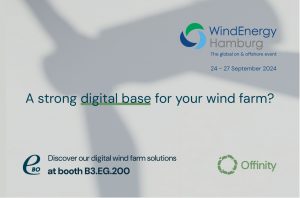Vattenfall has found a way to avoid grid congestion. By allowing windmills and electric cars to communicate with each other about the energy supply and charging requirements, the Swedish energy company wants to ensure that the demand for electric transport does not exceed the capacity of the grid. Vattenfall aims to achieve this with a “smart charging with wind energy” pilot using the new Hollandse Kust West wind farm.
We’re heading for an overloaded electricity grid. The reason is simple — the supply of flexible energy sources such as wind and solar is increasing. In addition, more and more electric vehicles are taking to our roads. This is good for the environment and helps us meet our climate goals. But increasing electrification also increases the risk of overloading our electricity grid. In order to avoid that eventuality, we must coordinate of supply and demand of (sustainable) energy.
Smart loading
Vattenfall says that at the moment it’s mainly an issue of “uncontrolled” charging — when we connect electric vehicles to a charging station and charging immediately starts to draw maximum power from the grid. The energy supplier is arguing for smart charging, which involves controlling when and how fast electric vehicles charge. The car communicates how much energy is needed and when directly to the charging station.
No need for a charge card
Vattenfall believes that this system can be further improved by coordinating the capacity of the grid with the charging needs of the vehicles plugged into charging stations. In this situation, the charging card — which normally makes communication between the charging station and the vehicle possible — becomes superfluous. The function of the card is instead performed by the car in the form of a digital “energy contract” that sends information to the charging station.
Hollandse Kust West wind farm
Smart charging continues to evolve. It’s now possible to take into account the supply of wind energy, and Vattenfall is excited about this development. Part of Vattenfall’s bid to build the Hollandse Kust West (HKW) offshore wind farm is a large-scale smart charging trial with 200–400 existing charging stations. The company will adapt the charging stations in accordance with the innovative charging station communication standard (ISO 15118) that enables cars to be “controlled” by charging stations, and it will take into account the amount of power produced by the HKW wind farm.
If the wind energy supply is high, cars will charge faster. If there is little wind energy being produced, charging will be more constant throughout the day. You can also program the system so that loading is mainly done when the market price is favorable. In this way, electric driving may become even more cost-efficient. And you also contribute to a good grid balance so other EV drivers don’t have to worry about a shortage of power.
Source: Vattenfall



